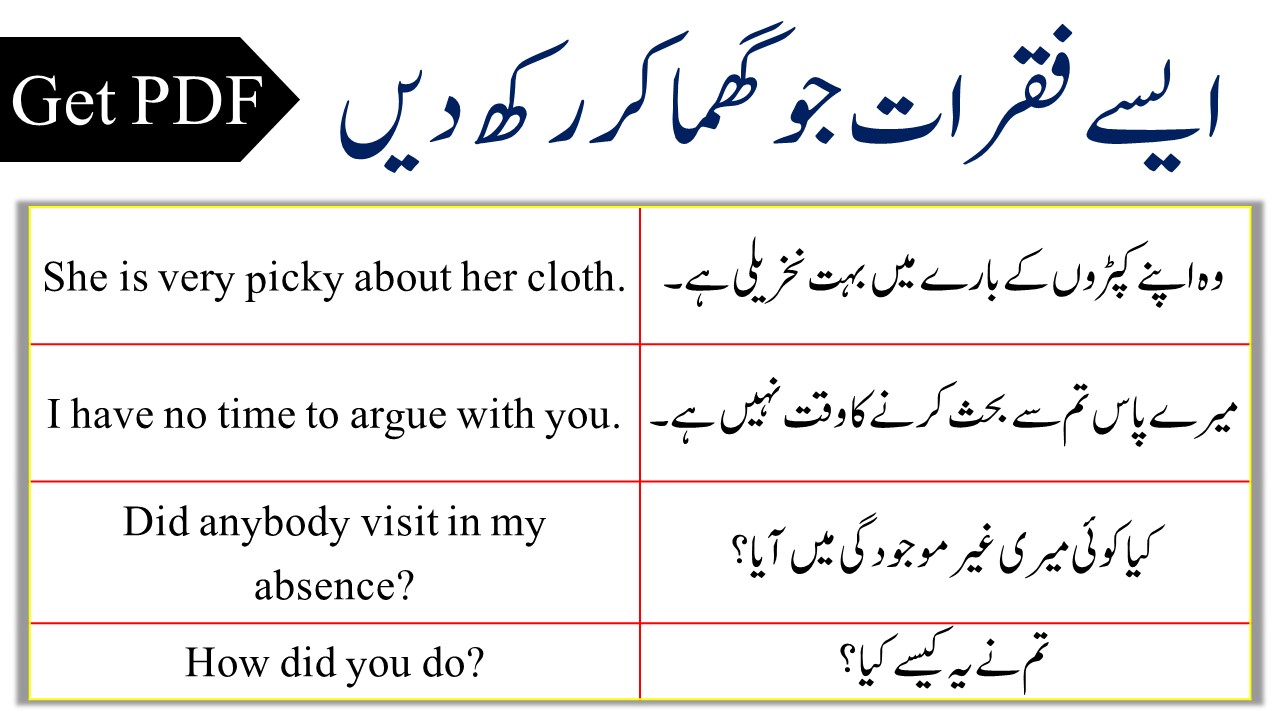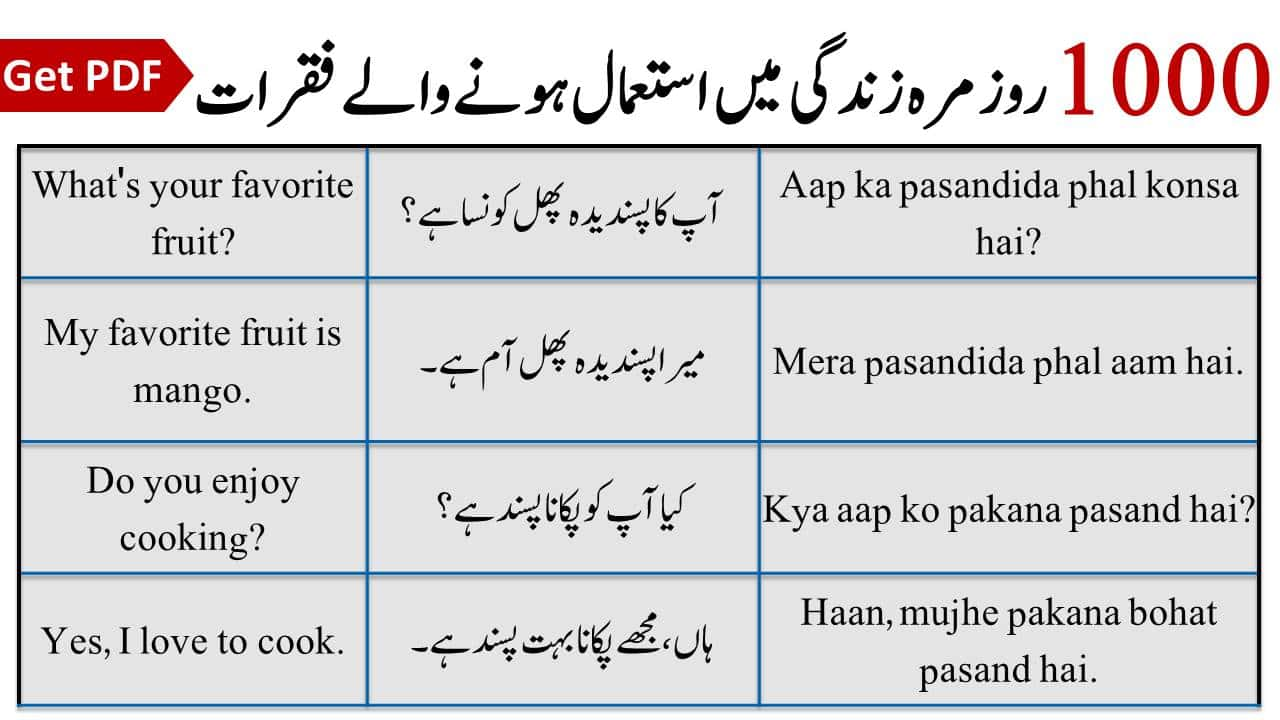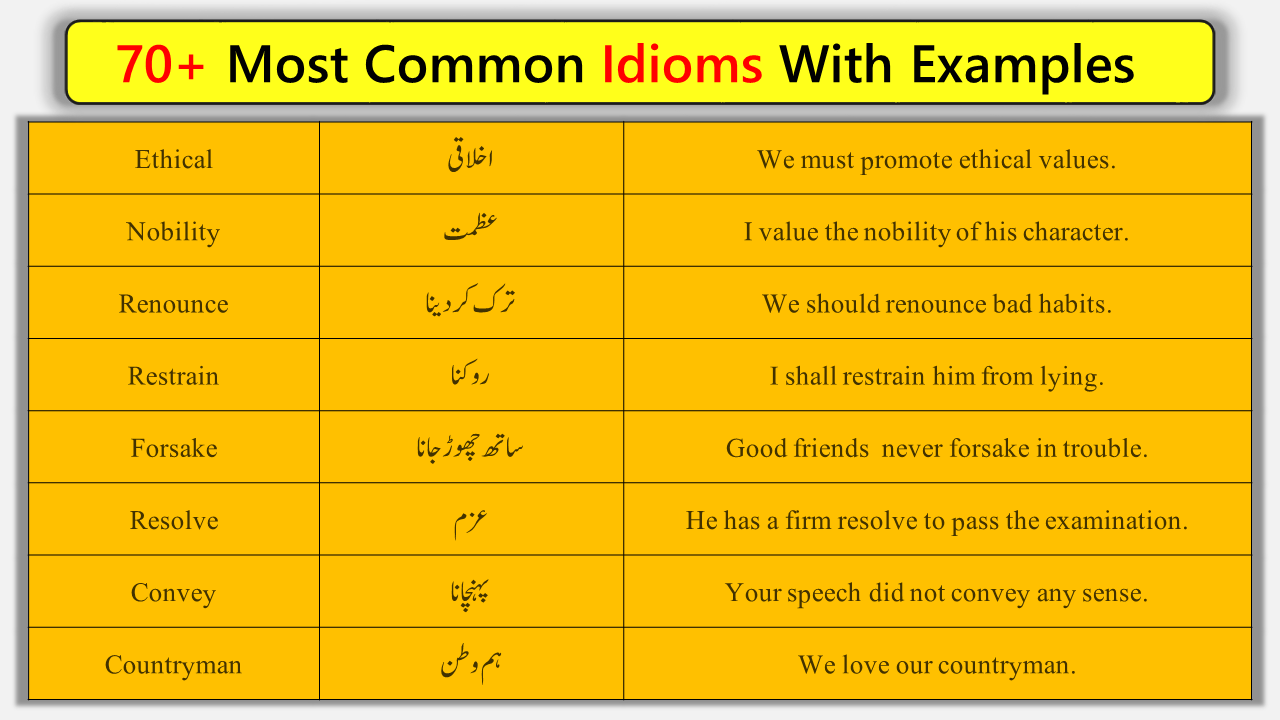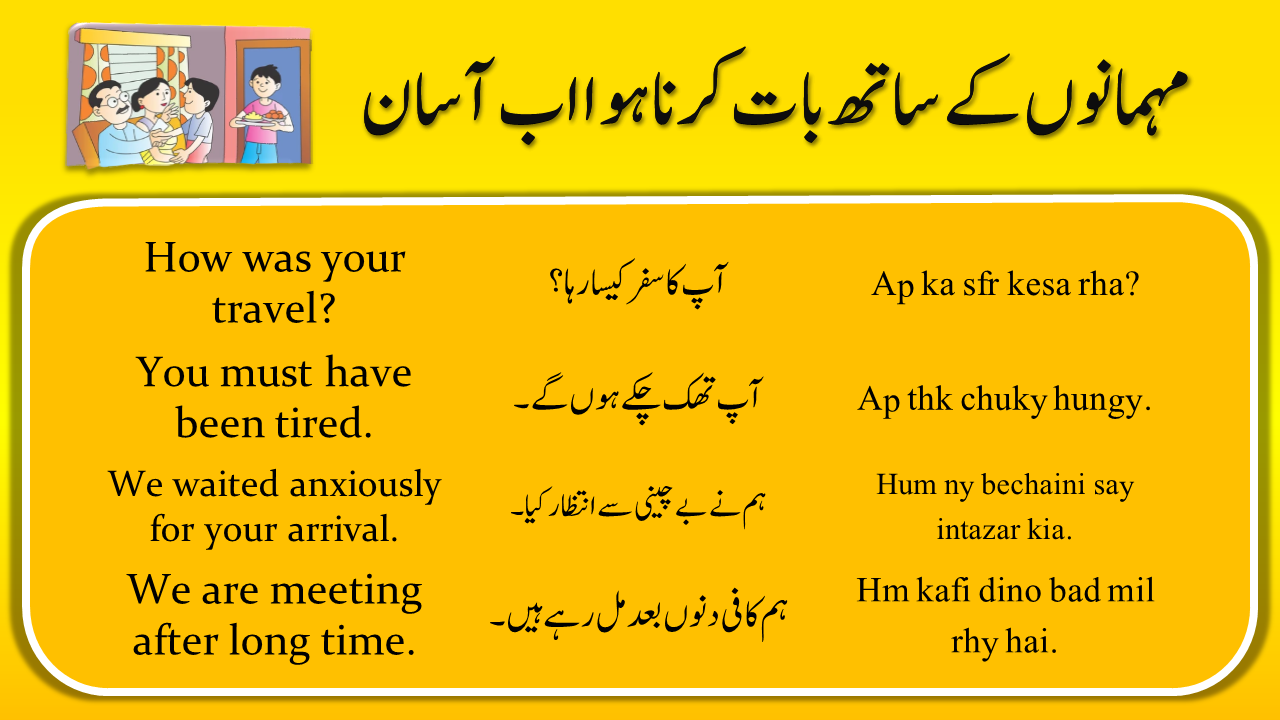Similar Sentences In Urdu And Hindi PDF Download
Improve your Urdu language skills by learning similar sentences with Urdu. Discover how similar sentences can enhance your language proficiency.
Similar Sentences in Urdu With Examples
Introduction: Urdu is a beautiful language spoken in many parts of the world. It has a rich history and a unique script that is visually stunning. If you’re interested in learning Urdu, you may want to start by learning similar sentences with Urdu. Similar sentences can help you understand the language better and improve your language skills. In this article, we’ll explore the benefits of learning similar sentences with Urdu and provide you with some examples to get you started.
Here is the full list of Similar sentences given below.
Don’t tease me.
مجھے تنگ مت کرو۔
Let’s get out of here.
چلو یہاں سے چلیں
My brother is calling me.
میرا بھائی مجھے بلا رہا ہے۔
Forgot this matter.
یہ مسلئہ بھول جاؤ۔
Never do so.
دوبارہ ایسا مت کرنا۔
How did you do?
تم نے یہ کیسے کیا؟
I am not free today.
میں آج فارغ نہیں ہوں۔
I have to go to university.
میں آج یونیورسٹی جاؤں گا۔
I know you very well.
میں تمہیں اچھی طرح جانتا ہوں۔
I don’t have any objection.
مجھے کوئی اعتراض نہیں ہے۔
Why are you losing your temper?
آپ اپنا غصہ کیوں کھو رہے ہیں؟
Stop yapping.
جپنا بند کرو۔
You should be ashamed of yourself.
آپ کو اپنے آپ پر شرم آنی چاہیے۔
You are an extremely cunning man.
آپ انتہائی چالاک آدمی ہیں۔
I am sorry for interrupting you.
میں مداخلت کرنے کے لیے معذرت خواہ ہوں۔

Why are Similar Sentences Important for Writing?
Similar sentences can be a powerful tool for improving your writing skills. By using similar sentences, you can create a more cohesive and engaging piece of writing that flows well and keeps your reader’s attention. Additionally, using similar sentences can help you to vary your sentence structure and word choices, which can make your writing more interesting and engaging.
here is some examples of similar sentences.
Apologize on my behalf.
میں اپنی طرف سے معذرت کرتا ہوں۔
It was not your fault.
یہ آپ کا قصور نہیں تھا۔
I don’t want to see your face.
میں تمہارا چہرہ نہیں دیکھنا چاہتا۔
Do you remember her name?
کیا آپ کو اس کا نام یاد ہے؟
I forgot her name.
میں اس کا نام بھول گیا۔
Did anybody visit in my absence?
کیا کوئی میری غیر موجودگی میں آیا؟
Don’t take him at his words.
اس کی باتوں میں مت آنا۔
I usually take a nap after a lunch.
میں عام طور پر دوپہر کے کھانے کے بعد تھوڑی دیر آرام کرتا ہوں۔
I fell down the stairs.
میں سیڑھیوں سے نیچے گر گیا۔
Don’t tell to anyone.
کسی کو مت بتانا۔
My shoes are worn out.
میرے جوتے پھٹے ہوئے ہیں۔
He is a picky eater.
وہ کھانے میں نخرے کرتا ہے۔
She is very picky about her cloth.
وہ اپنے کپڑوں کے بارے میں بہت چنچل ہے۔
He attacked from behind.
اس نے پیچھے سے حملہ کیا۔
Watch out for your head.
اپنے سر کا خیال رکھیں۔

How to Identify Similar Sentences?
Identifying similar sentences can be a challenge, but there are a few techniques that can make it easier. One approach is to look for groups of sentences that share similar structures, such as starting with the same word or containing the same grammatical pattern. Another approach is to look for groups of sentences that describe similar actions or events.
Here is some examples to identify similar sentences.
I have no time to argue with you.
میرے پاس تم سے بحث کرنے کا وقت نہیں ہے۔
You must consult a doctor.
آپ کو ڈاکٹر سے مشورہ کرنا چاہیے۔
I don’t suppose, you know him.
مجھے نہیں لگتا، آپ اسے جانتے ہیں۔
Would you happen to know where is Bilal?
کیا آپ کو معلوم ہوگا کہ بلال کہاں ہے؟
He is so fickle-minded.
وہ بہت چست دماغ ہے۔
I don’t know much about it.
میں اس کے بارے میں زیادہ نہیں جانتا ہوں۔
Drop him a text.
اسے ایک میسج بھیجیں۔
Leave early to avoid the morning traffic.
صبح کی ٹریفک سے بچنے کے لیے جلدی نکلیں۔
I will do it, before the end of the day.
میں یہ دن کے اختتام سے پہلےکر دوں گا ۔
This is way out of my budget.
یہ میرے بجٹ سے باہر ہے۔
I was tied up with a meeting.
میں ایک ملاقات میں مصروف تھا۔
They will revert in weak or so.
وہ ایک ہفتے میں جواب دیں گے۔
Don’t mislead him.
اسے گمراہ نہ کریں۔
What the heck are you doing with my laptop?
آپ میرے لیپ ٹاپ کے ساتھ کیا کر رہے ہیں؟
You are mistaken.
آپ غلطی پر ہیں۔

Techniques for Using Similar Sentences in Your Writing
Once you’ve identified similar sentences, there are several techniques you can use to incorporate them into your writing. One approach is to use them to create a more cohesive and engaging piece of writing by using them to describe a particular action or event. Another approach is to use them to vary your sentence structure and word choices, which can make your writing more interesting and engaging.
here is some examples to using similar sentences in writing.
This is one of the stupid questions you ask.
یہ ان احمقانہ سوالات میں سے ایک ہے جو آپ پوچھتے ہیں۔
Don’t make a hasty decision.
جلد بازی میں فیصلہ نہ کریں۔
Don’t act rashly.
جلد بازی سے کام نہ لیں۔
She rashly married the wrong person.
اس نے عجلت میں غلط شخص سے شادی کی۔
I am fed up with his complaints.
میں اس کی شکایتوں سے تنگ آ گیا ہوں۔
Pick it up off the floor.
اسے فرش سے اٹھاؤ۔
No need to go elsewhere.
کہیں اور جانے کی ضرورت نہیں۔
I will arrange money somehow.
میں کسی طرح پیسے کا بندوبست کر لوں گا۔
I have not told him anything till now.
میں نے اسے ابھی تک کچھ نہیں بتایا۔
Wrap it in the newspaper.
اسے اخبار میں لپیٹ دیں۔
Wrap up well, it is cold outside.
اچھی طرح لپیٹ لو، باہر سردی ہے۔
Loosen up a bit.
ارے تھوڑا پرسکون ہوجائیں۔
Please take out your slippers outside.
براہِ کرم اپنی چپل باہر اتار دیں۔
Don’t ever do again that.
دوبارہ کبھی ایسا نہ کریں۔
Don’t spoil my mood.
میرا موڈ خراب نہ کرو۔

FAQs
Q: How can I make sure I’m using similar sentences correctly?
A: To make sure you’re using similar sentences correctly, it’s important to read your writing out loud and to get feedback from others. You can also use online tools and resources to help you identify and use similar sentences.
Q: Can using similar sentences improve my writing skills?
A: Yes, using similar sentences can be a powerful tool for improving your writing skills. By using similar sentences, you can create a more cohesive and engaging piece of writing that flows well and keeps your reader’s attention.
PDF download of similar sentences
If you want to learn more similar sentences in Urdu and Hindi, you can download a PDF file that includes many useful sentences. The PDF file can be downloaded by clicking on the link below:
The articles you may like 🙂
| English To Urdu Sentences For Order With Translation |
| English to Urdu Summer Sentences With Translation |
| 52 Most Common English Vocabulary Words With Sentences |






